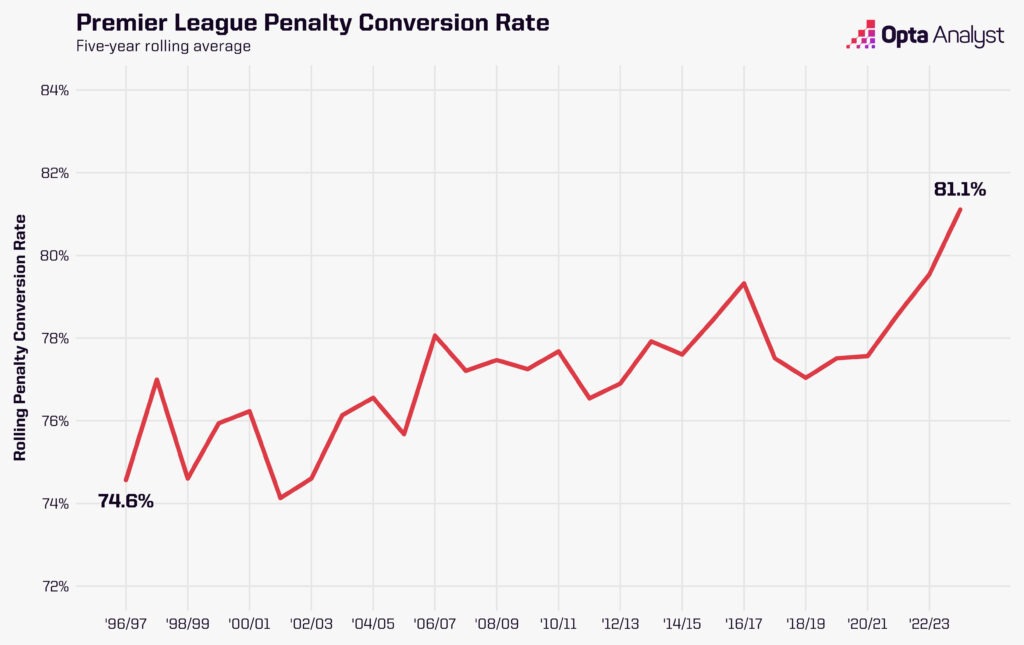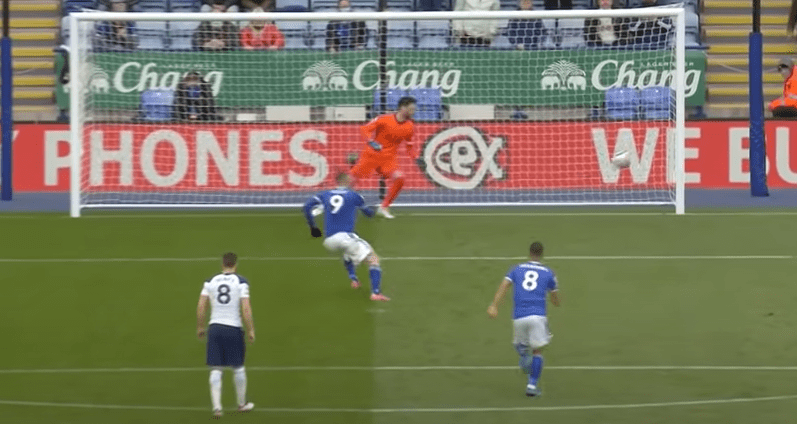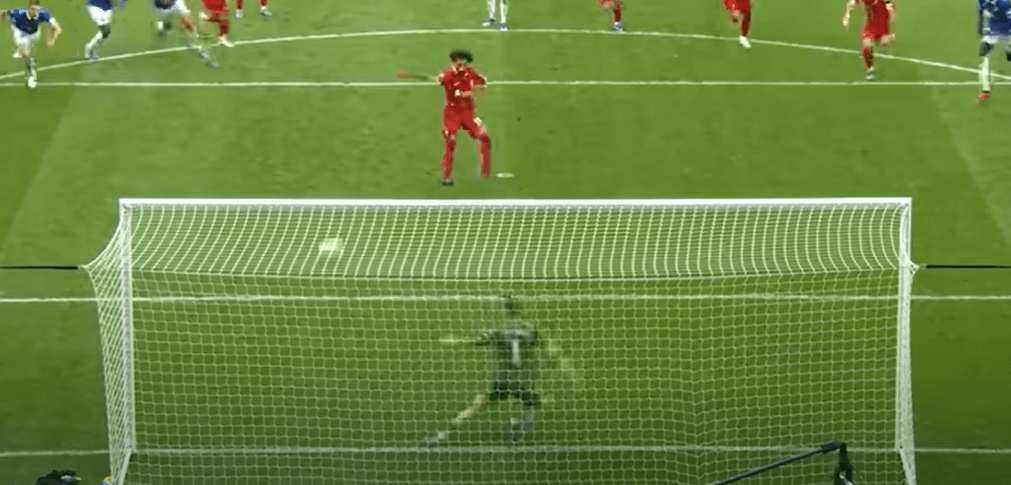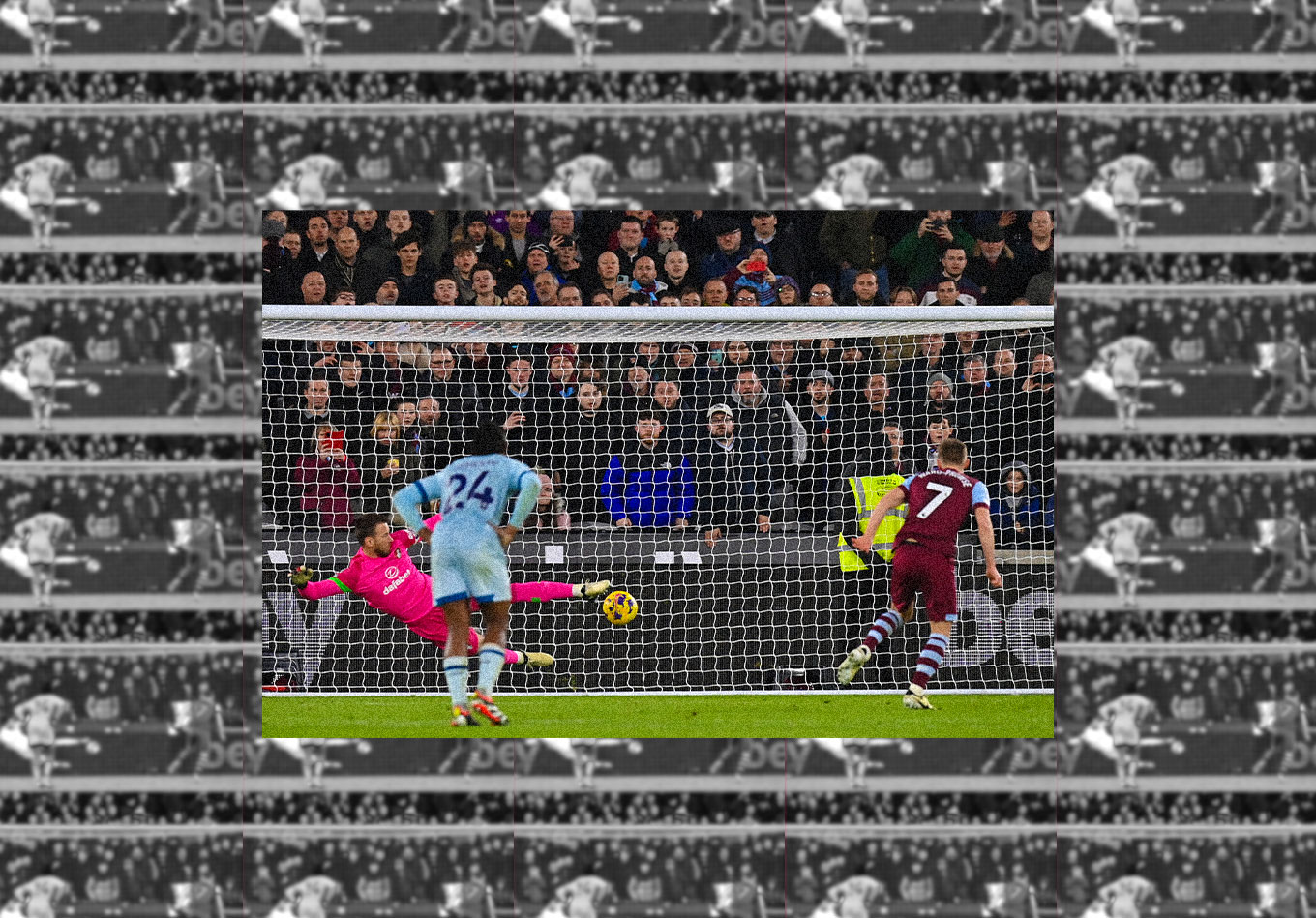With more penalties being scored than ever before in the Premier League, is it time for goalkeepers to start taking a bold approach by choosing not to dive from time to time?
The 2023-24 season has seen unprecedented quality from the penalty spot. With 90% of spot-kicks converted, this campaign has so far been the most prolific from 12 yards in Premier League history.
The introduction of VAR, initially at least, led to more penalties being given. The 2020-21 Premier League season – the second after VAR was introduced – saw more penalties than ever before. A penalty was taken every 3.0 games, meaning 125 in total – 13 more than ever before in a Premier League campaign. 2023-24 has seen penalties awarded at the third-highest rate in the competition’s history (one every 3.4 games).
This recent increase may have prompted Premier League players to spend a little longer practising their penalty-taking. After all, if they were going to be taking more penalties, they may as well maximise their chances of scoring.
There have also been rule changes that have made the goalkeeper’s job more difficult, most notably that they have to stay on their line until the point the attacker strikes the ball.
Before this season, the Premier League had never seen penalties scored at more than the 83.9% success rate seen in 2013-14. The seasonal penalty-conversion rate has dropped as low as 65.8% (2001-02), and has been beneath 75% in seven different seasons. One of those was last season, when just 74.8% of penalties were scored.
But penalty-success rates are on the rise. When looking at the five-season rolling average of penalty-conversion rates in the Premier League, you can see exactly how much they are going up. It appears as though that low rate in 2022-23 was an anomaly.

It makes sense, given the overall standard of football is rising so much. Penalties are as discrete, repeatable, and learnable a skill as you get in the entire sport, and these incredibly talented players can practise that skill over and over. It means the elite can disguise their intentions from the opposition goalkeeper expertly, and can find the corners of the goal more effectively than ever before.
Those numbers are, however, being boosted in recent years by remarkable numbers when penalties are aimed straight down the middle of the goal. The conversion rate of penalties aimed into the middle of the goal is markedly higher than elsewhere.
It’s worth pointing out here that we haven’t quite used Opta’s exact definition for putting a penalty down the middle. For data-collection purposes, one way in which all shots – including penalties – are sorted is by the exact coordinates of where the ball reaches the goal. Shots placed into the middle third of the goal are deemed to be in the ‘centre’ zone.
But for the purposes of our research here, we want to take more than just end location into account. We only looked at penalties placed into the centre zone – either high or low – but we only want penalties that were specifically aimed there, too. This therefore disregards penalties that were directed towards the corner but were mishit and ended up in the middle zone. Of course, only the taker will know for sure where exactly they wanted to place the penalty, but it is generally possible to get a decent idea from watching replays of each penalty back what their intentions were.
So, considering only penalties that were aimed down the middle and went down the middle, we discovered that these brought even greater success.
In 2023-24, 15 spot-kicks have been placed in the middle of the goal, and 14 have been scored, the only exception being Mohamed Salah’s drilled effort against Newcastle last month that Martin Dubravka kept out (more on that one later).
Last season, when penalties were scored at one of the lowest rates in Premier League history (74.7%), 20 penalties were aimed down the middle of the goal, and 19 were scored. James Maddison’s spot-kick against Everton – saved by Jordan Pickford – in May 2023 was the only one of them that was missed. Pickford revealed after the game that he knew Maddison put lots of his penalties down the middle, and “double bluffed” his England teammate by standing still.
So, that means a 93.3% success rate this season for penalties aimed down the middle – compared to 89.1% when put towards the corners. Last season, 95% of penalties struck down the middle were scored, compared to 69.6% when aimed elsewhere.
Across those two seasons, 21.2% of penalties (35 of 165) have been hit down the middle. So, this leads us to the question: why don’t more goalkeepers stand still at penalties?
There are a few things to consider here. Firstly, with the rise of the ‘goalkeeper-dependent’ penalty-taking method – where the taker runs up to the ball slowly, waiting for the goalkeeper to move one way and then place the ball the other – sometimes penalties are aimed down the middle specifically because the goalkeeper has moved out of the way. If the goalkeeper had stayed still a split-second longer, the penalty might have been placed into the corner.
However, the vast majority of goalkeeper-dependent penalties are placed into the corners because by definition the goalkeepers move late and so a shot down the middle of the goal comes with the risk that the goalkeeper hasn’t pushed off far enough to get out of the way by the time the ball reaches the goal line. Indeed, most of the penalties in the last two seasons that have been aimed straight down the middle of the goal have been goalkeeper-independent penalties. In other words, the taker has pre-determined that they are going to aim down the middle, working to the assumption that the goalkeeper will dive.
That works so often simply because goalkeepers do tend to dive. They can be made to look pretty silly if they just stand still – and doing so will leave them open to criticism from fans that their goalkeeper hasn’t even tried to save the penalty.


In the second image, Pickford – someone who is bold enough to stay still and, as we have mentioned already, has had some joy in doing so – watches on as Salah’s Merseyside-derby penalty flies into the corner of the net at Anfield in October of this season.
Although on this occasion it didn’t work, standing still against Salah isn’t a bad idea at all. The Liverpool forward has aimed a penalty straight down the middle more times in the last two Premier League seasons (four) than anyone else.
Brighton’s Bart Verbruggen had done the same thing in Liverpool’s previous game. He, too, expected Salah to go down the middle from the spot at the Amex Stadium, only for Salah to put it to his side. Verbruggen dived too late and the ball was well past him by the time he made it over to the side of the goal. So, in successive games in October, Salah faced goalkeepers who predicted he would put his penalty down the middle.
He didn’t take another penalty until Newcastle visited Anfield on New Year’s Day. Yet again, the goalkeeper he faced stood still, only this time Dubravka kept it out as Salah went down the middle. It led to Salah placing his second penalty of the game low to Dubravka’s right, with the Slovakian guessing the other way.
It’s a real game of chicken, and you can see why goalkeepers rarely opt to stay still, if only for fear of being made to look a fool.
Only two of the 70 penalties taken in the Premier League in 2023-24 has missed the target, and even then both have hit the woodwork (Erling Haaland vs Sheffield United and Darwin Núñez vs Chelsea). That statistic alongside the fact that more are being scored than ever before suggests penalty-takers really are better than ever before. As goalkeepers have to stay rooted to their goal line and can’t move too early because the taker will simply put the ball the other way, diving to save a penalty is more difficult than ever before. So, there’s an argument standing still at a penalty might even increase the keeper’s chance of saving the shot.
From the taker’s perspective, going straight down the middle is in many ways the easiest option. It’s harder to miss the target when avoiding the corners, and goalkeepers so rarely stand still that it’s about as foolproof as penalty-taking gets.
Maybe it’s time for goalkeepers across the Premier League to address this issue and take a stand – by standing still at penalties more often.
Enjoy this? Subscribe to our football newsletter to receive exclusive weekly content. You should also follow our social accounts over on X, Instagram, TikTok and Facebook.
